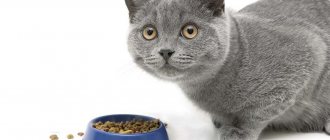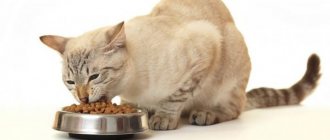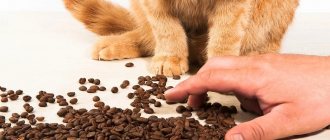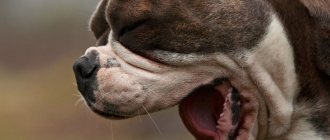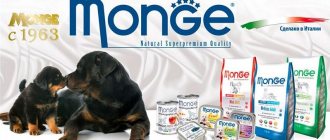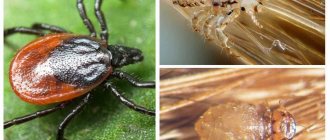July 13, 2018
A dry diet for a pet is a reasonable solution that almost all pet owners come to sooner or later. Such food does not require cooking, does not spoil at room temperature, and most importantly, is perfectly balanced in composition.
However, not all four-legged babies are accustomed to dry food in advance. Sometimes they don’t perceive the pellets as food and turn their nose up at the bowl. Today we will talk about how to accustom a puppy to dry food without stress and digestive problems.
How to accustom puppies to dry food
The puppy is ready to switch to independent feeding at the age of about a month, when its baby teeth appear.
Babies are usually sent to new families at 1.5–2.5 months, which means that by this time they are already accustomed to some type of food. If the breeder fed the puppies natural food or canned food, and you decided to accustom him to dry food, then you need to start almost immediately to make the process easier and faster. You should only wait two weeks until the baby adapts to the new environment, and during this time choose the best diet for your pet. This is a very important and responsible matter, because all dry foods are very different in their composition, and the negative experience of accustoming them to them is most often associated with the wrong choice of diet.
If you have not yet learned to understand ready-made industrial feeds, we advise you to use the rating on our website, where you can see the diets that scored the highest number of points according to our criteria, and also read a detailed description of the feed and each ingredient included in it. It’s not a fact that the product you choose will immediately suit your pet, because there are individual reactions and preferences of the animal that you still know little about, but at least you will have guidelines on where to start.
Having chosen food, add it to your usual food, gradually increasing the share of the new diet and, accordingly, reducing the volume of the old one. To begin with, the granules can be soaked: this way the smell of the food will be more pronounced and the consistency will become more convenient for the puppy. Carefully monitor your pet's well-being, monitor its height and weight, and monitor the consistency of its stool.
Advantages and disadvantages of industrial feeds
It’s not for nothing that industrial food is so popular among pet owners. High competition between manufacturers forces them to work over and over again to improve the quality of their products.
Industrial dog food
The result is the fact that it is now possible to select dry food that ideally meets all the needs of a particular breed, age and physical condition of the dog.
Some dog owners do not know or do not want to understand that their pets are not omnivores, and feed them inappropriate and sometimes harmful foods. This approach to feeding a dog sooner or later leads to disastrous health consequences, and in advanced cases can be fatal. Find out what you should not feed your dog in our separate article.
Convenience
One of the main advantages of dry food. Owners with busy schedules free up a lot of time that was previously spent on preparing healthy, natural food. Besides:
- There is no need for cooking.
- Dry food can simply be poured into a bowl.
- It takes no more than 15 minutes to feed your pet.
Reference! During this time, the dog manages to completely eat the prescribed portion of the treat.
Purity
Often, when feeding natural food, the dog is not too careful. The owner has to spend effort to clean up around the bowl, collecting pieces of food, and wash the pet. Residues of porridge or other products may end up not only on the dog’s face, but also on the ears and paws. This is especially true for animals with long hair.
When feeding dry food, the dog remains clean, and the cracker that falls out of the bowl does not stain the floor.
The food does not stain the dog’s fur or the floor around the bowl.
Benefit
Every responsible owner tries to make their pet’s food as healthy as possible. To do this, it is extremely important to calculate the ideal ratio of proteins, carbohydrates, vitamins and other components for the dog. In industrial feeds, all this is already contained in the quantity necessary for the life and health of the animal. No additional feeding is required.
Recommended composition of quality feed
These foods are formulated based on the dog's age, weight, and age. Some manufacturers produce food aimed at strengthening the immune system or solving certain animal health problems.
Reference! All of the above qualities refer to high-quality, high-class dry food. Cheap analogues most often do not have these qualities. They mainly consist of cereals and meat waste. Poor quality food will do more harm than good.
The disadvantages include the rather high cost of good dry food. Difficulties will also arise if the owner decides to change the brand and switch the dog to food from another manufacturer. A sudden transition may not have the best effect on your pet’s well-being.
How to train an adult dog to eat dry food
As you know, changing established habits is always difficult for both people and dogs, so sometimes the question of how to teach an adult dog to eat dry food arises very acutely. But you need to understand that the animal has no special reasons to be mischievous, so you just need to figure out why the dog does not want to switch to a new diet.
The first thing we would like to advise you is, again, to responsibly approach the choice of dry food, based not on advertising statements from manufacturers, advice on forums or recommendations from friends, but on an analysis of the composition of the diet, which should suit the dog from the point of view of its physiology.
Of course, the animal knows nothing about the ingredients and production of dry food, but its sense of smell is a thousand times stronger than that of a human, and the instinctive desire to eat the food to which it is adapted during evolution cannot be erased by years of breeding. Therefore, we advise you to immediately select the food that is most suitable for the dog as a biological species. You can find out the main criteria for a quality diet here.
Secondly, the transition should not be abrupt, but gradual. Then you won’t have to think about how to get your dog to eat dry food, especially if it has never tried it before. Start introducing your pet to food “from afar” - for example, offering granules as a treat on walks, as a reward for completing commands, and so on. At the same time, you need to start mixing dry food with your usual food, gradually and quite slowly (over 5-7 days) replacing one with the other. To facilitate the process, you can also soak dry food at first, and then, after a complete transition, gradually transfer to dry granules using the same method.
Feeding rules when using industrial feed
Dry food consumption rates are usually highlighted in a separate block on the packaging. However, these figures are very approximate. The amount of feed required by each animal depends on many parameters. The main factors are the weight of the dog, its activity during the day and the energy value of drying.
Manufacturers offer a wide range of dry food
Economy class dry food usually has a poor composition. Accordingly, the dog requires a large portion to satisfy its hunger. In addition, such a diet implies the introduction of complementary foods containing substances necessary for the dog, which are not included in this drying.
Premium dry food is more balanced. They consist of protein components and include all the vitamins and microelements a dog needs.
To calculate the optimal amount of food for a dog, it is necessary to take into account that working animals, as well as lactating bitches, need an increased portion. For active dogs, the norm indicated on the package is increased by a third; for pregnant and lactating bitches, a quarter of the total recommended portion is added.
Proper feeding of a pregnant bitch is the key not only to her health, but also to the well-being of the entire litter after birth. You can read more about how to understand that a dog is pregnant in our separate article.
A pregnant dog needs more food
For older animals and those animals that lead a sedentary lifestyle, lying on the couch most of the day, it is advisable to reduce the portion by ¼. This will avoid overeating and, as a result, obesity.
According to statistics, about 40% of dogs are obese. Obesity is a condition in which excess fat is deposited in the subcutaneous tissue and other tissues. Dogs, like people, are also affected by this problem. You can read more about obesity in dogs in our special article.
Table 1. Recommended doses of premium food for different dogs.
| Dog weight | Amount of food per day for active dogs | Daily Value for Dogs with Low Activity Levels |
| 2 kg | 60 g | 30 g |
| 5 kg | 90 g | 60 g |
| 10 kg | 160 g | 120 g |
| 20 kg | 280 g | 180 g |
| 30 kg | 390 g | 240 g |
| 40 kg | 480 g | 320 g |
| 50 kg | 560 g | 360 g |
| 60 kg | 640 g | 420 g |
We should not forget about the feeding regime. The dog must eat strictly at the allotted time. If possible, you should avoid feeding during the day. This is especially true for food from the table. Human food contains too many spices and is absolutely not suitable for a dog's diet. In addition, such complementary foods disrupt the feeding schedule. As a result, when feeding time approaches, the dog simply will not eat because he does not feel hungry.
Special feeders make feeding even more convenient
Video - how to choose dry dog food
What to do if your dog still won't eat dry food?
Some dogs, especially small and decorative breeds, are particularly stubborn, and if you call a spade a spade, then especially outstanding abilities in manipulating the owner. If, despite all your tricks, the dog does not eat dry food, you will have to force it. To insist on your own, you should first of all eliminate any snacking between fixed meals and ruthlessly remove the bowl immediately after the dog has turned away from it, until the next feeding. As a rule, after a couple of missed meals, the pet is ready to eat everything that was offered to him.
If the hunger strike lasts for more than 24 hours, and the situation does not change, check whether the pet is receiving food from someone else, perhaps other family members are feeding it when you are not looking - such cases are far from uncommon. But if nothing of the sort happens, pay attention to the dog’s health – refusal to eat can be accompanied by a large number of diseases, which are also expressed in other symptoms (lethargy, apathy, upset bowel movements, vomiting, fever).
In the case when the dog is alert, active and clearly hungry, but is reluctant to eat dry food (complete refusal in this case is impossible; not a single animal has ever voluntarily starved itself to death), then it is worth going back to the beginning and thinking about changing the diet. There is no point in persisting in this case; a deficiency of the most important nutrients for the body has not added health to anyone, so it is worth analyzing the composition of the diet that the pet is refusing, and choosing a diet that is fundamentally different in type and, most importantly, quantity, sources of animal protein.
Other things to consider
You should not start switching to dry food if the dog has recently had an illness, surgery or vaccination, and is also in a state of stress (separation from the owner, new pets or children in the house, etc.). And most importantly! If you have already successfully completed the task of accustoming your pet to food, then you definitely need to monitor the drinking regime. Fresh, clean water should be available around the clock. The fact is that if natural food or wet food contains liquid, then dry food practically does not, and water, as you yourself understand, is absolutely necessary for the normal functioning of the body.

